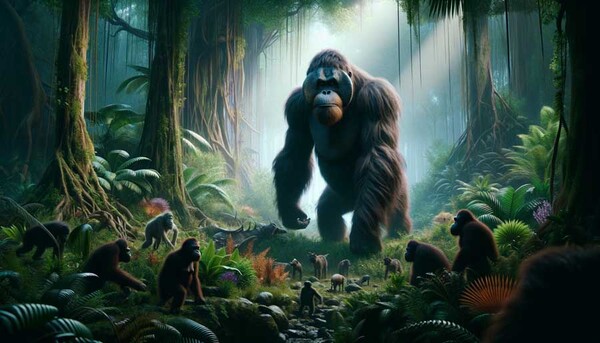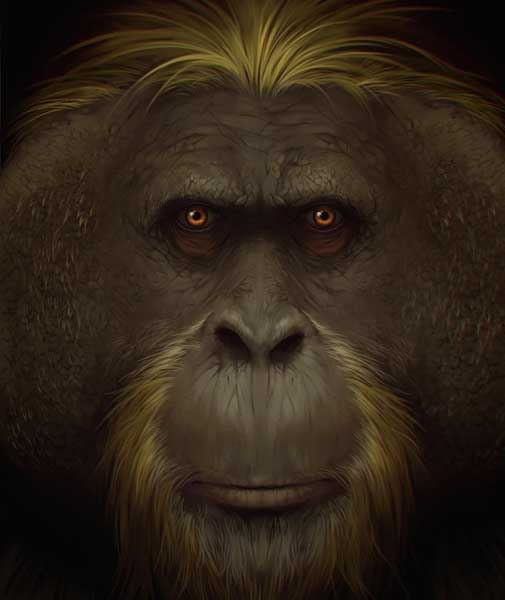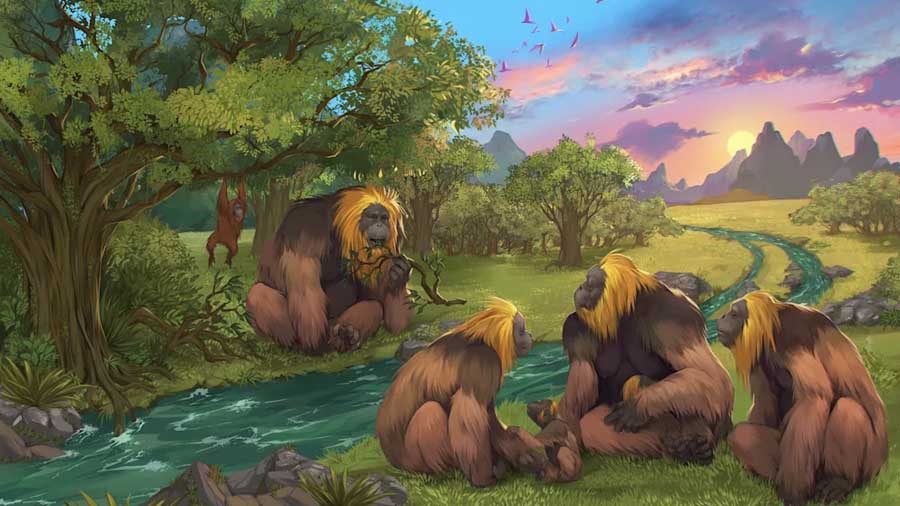
-
9.4K Views 0 Comments 0 Likes

DLNews
Once upon a time, a real-life "King Kong" roamed the earth. Towering at three meters tall and weighing a hefty 300 kilograms, the "Gigantopithecus blacki" - a name derived from the Greek words for 'giant ape' - was the largest primate ever to walk our planet.

"Gigantopithecus blacki" must have been an enormous phenomenon. The apes grew three meters tall and weighed up to 300 kilograms.
This prehistoric "King Kong" remained an enigma to scientists for years. Its discovery was as extraordinary as its existence. In 1935, an adventurous turn of events led German paleontologist Gustav Heinrich Ralph von Koenigswald to a peculiarly large molar sold as a "dragon's tooth" in a Hong Kong pharmacy.

The prehistoric "King Kong" was a gentle giant that fed mainly on fruit.
Decades of extensive exploration yielded only meager evidence of this colossal creature: just four jawbones and about 2,000 teeth. Yet, a recent breakthrough by a research team led by Kira Westaway of Macquarie University in Sydney has shed light on several mysteries surrounding this mega-ape, as detailed in the prestigious journal "Nature."

According to researchers, the giant ape was perfectly adapted to life in the jungle and on trees.
This prehistoric giant lived around 2.3 million years ago in Southeast Asia until it abruptly vanished 255,000 years ago. Research indicates a dramatic transformation in its habitat. The dense, moist jungles it once thrived in gave way to dry grasslands - an environment the Gigantopithecus couldn't adapt to, leading to its extinction. Primarily a fruit-eater, similar to orangutans, its diet was a significant factor in its demise.
The sheer size of Gigantopithecus was also a double-edged sword. "It was the ultimate specialist, unlike more adaptable species like orangutans, which ultimately led to its downfall," co-author Yingqi Zhang from the Chinese Academy of Sciences explains.
The researchers speculate that this ancient "King Kong" reproduction rate was likely slow, further hampering the species' survival.
Scientists have ruled out human involvement in its extinction. While hominids, the ancestors of our species, did exist in Southeast Asia during this time, there is no evidence linking them to the ape's disappearance. Interestingly, modern humans, our direct ancestors, were beginning to emerge in Africa around 255,000 years ago.
In summary, the fall of this real-life "King Kong" was a natural consequence of environmental changes and its evolutionary specializations, offering a poignant reminder of the delicate balance within ecosystems and the impact of ecological shifts on living creatures.
The Real-Life "King Kong" and Its Sudden Exti... 0 0 0 775 4
4 photos

At Desert Local News, connections are everything. We're not just another social networking platform—we're a lively hub where people from all walks of life come together to share stories, spark ideas, and grow together. Here, creativity flourishes, communities grow stronger, and conversations spark global awareness.